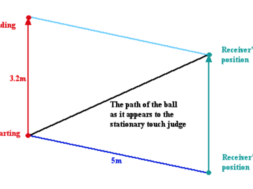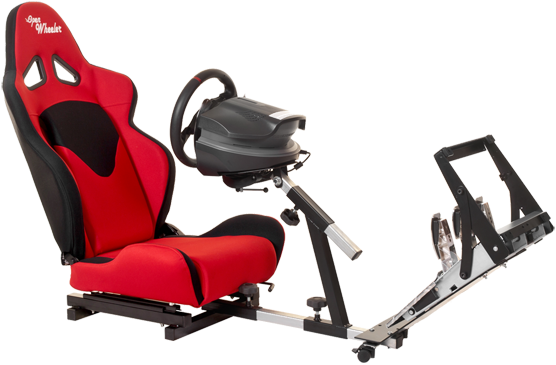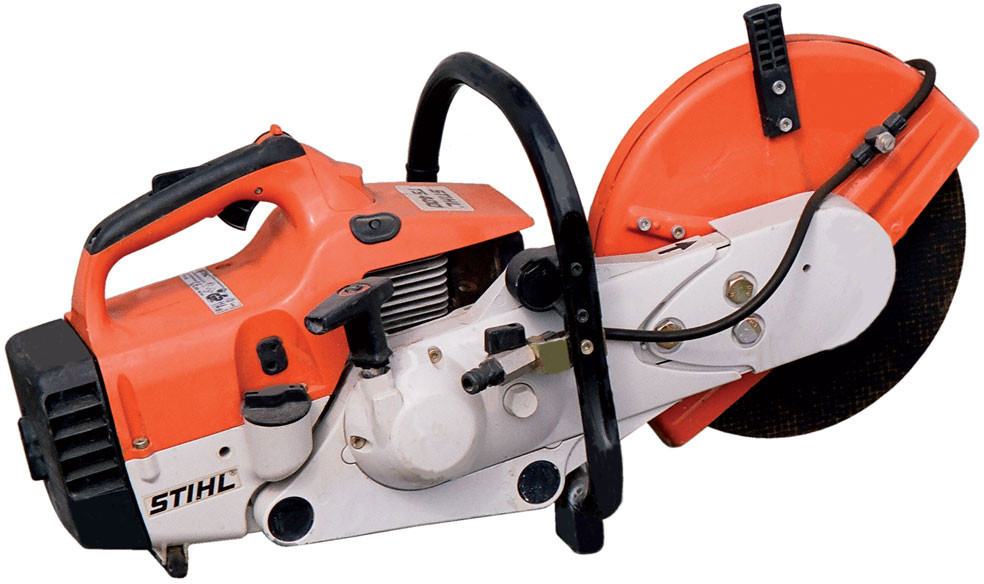
TS400 Disc Cutter – Uses and things you should know about 2 stroke small engines
What can you do with a Stihl TS400 Disc Cutter
A disc cutter is Ideal for cutting through concrete slabs, blocks, pavers, kerbstones, and bricks. You can also cut natural and engineered stones, such as granite and marble. Its not limited to masonry as by changing the blade you can cut steel bars, pipes, and other metals. It can also be used for roadwork cutting asphalt and for cutting driveways and pavements.
If you want quick and easy door openings or demolition work then the Ts400 will quickly cutting walls, partitions, and other structures for renovation or demolition projects.A real advantage is that a disc cutter when cutting concrete can handle jobs where concrete contains steel reinforcement bars.
When to Use Water with a TS400 Disc Cutter
Using water with a disc cutter serves several purposes:
- Dust Suppression: when cutting materials like concrete, masonry, and stone, water will minimise dust which is unpleasant to be around and can be seriously hazardous to health. Many building sites have health and safety requirements that mandate the use of water to control dust.
- Blade Cooling: Water prolongs the life of diamond and abrasive blades by preventing overheating. It also provides cleaner cuts by reducing friction and makes the cutting process smoother, improving accuracy and efficiency.
Note: Ensure the cutter has a built-in water attachment or connect an external water supply to direct water at the cutting area.
Reliability Comparison: TS410 and TS420 vs TS400
- Engine and Durability:
- TS400 Disc Cutter:
- Known for its robust and reliable engine, the TS400 has been a workhorse in construction for decades. However, it’s an older model and lacks some of the advanced features that improve long-term reliability in newer models.
- Over time, frequent exposure to dust and debris can strain the air filter and carburettor, leading to maintenance issues if not cleaned or replaced regularly.
- TS410/TS420:
- Both models benefit from Stihl’s updated X2 air filtration system, which ensures cleaner air intake and extends the life of the engine. This feature significantly improves reliability over extended use, especially in dusty environments.
- The engines in the TS410 and TS420 are designed to meet modern emissions standards, which means they run cleaner and more efficiently, with reduced carbon build-up.
- The anti-vibration system and improved housing help reduce wear on internal components, making them more durable in the long run.
- TS400 Disc Cutter:
- Parts and Maintenance:
- The TS400 requires more frequent filter cleaning and maintenance due to its older air filtration system and basic design. Spare parts are still available but may become harder to source as the model ages.
- The TS410 and TS420 have longer maintenance intervals due to their advanced filtration and overall better-engineered systems. Replacement parts for these models are more readily available due to their modern design.
- Overall Reliability:
- While the TS400 is a reliable tool, the TS410 and TS420 are generally more dependable for long-term use thanks to their better filtration, improved fuel efficiency, and advanced engineering. They’re also less prone to downtime caused by clogged filters or engine overheating.
- Other Advantages: The TS420 offers a larger cutting depth (up to 125 mm with a 14″ blade) compared to the TS400, making it more versatile for thicker materials. The newer models have improved fuel efficiency, reducing operating costs. The TS410 and TS420 feature Stihl’s advanced anti-vibration system, reducing operator fatigue.
Use of Ethanol-Free Fuel for Long Storage
- Ethanol in Standard Fuel:
- Standard petrol often contains up to 10% ethanol (E10), which absorbs moisture from the air. Over time, this can lead to phase separation (water settling at the bottom of the tank), which can corrode internal components, gum up the carburettor, and make the fuel unusable.
- Ethanol-Free Fuel Benefits:
- Improved Starting: Ethanol-free fuel is less likely to degrade over time, making it easier to start the machine after long periods of inactivity.
- Carburettor Protection: Reduces the likelihood of blockages or damage caused by fuel varnish or ethanol-related corrosion.
- Engine Longevity: Keeps the fuel system cleaner, reducing wear on seals, gaskets, and other components.
- When to Use Ethanol-Free Fuel:
- Always use ethanol-free fuel if the unit will be stored for more than 30 days.
- Consider using Stihl MotoMix or similar pre-mixed, ethanol-free fuel, which has a longer shelf life and includes stabilisers to maintain fuel quality during storage.
- Additional Tips for Long-Term Storage:
- Run the Engine Dry: Before storing the unit, run it until the fuel tank and carburettor are empty to prevent stale fuel from clogging the system.
- Add a Fuel Stabiliser: If ethanol-free fuel isn’t available, mix a stabiliser into the petrol to extend its life and reduce the risk of moisture absorption.
- Check the Air Filter: Ensure the air filter is clean before storage to prevent debris build-up.
Aspen 2
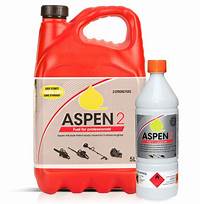 A pre-mixed, ethanol-free alkylate petrol designed specifically for two-stroke engines. Aspen 2 burns cleaner than regular petrol, resulting in fewer harmful emissions and less carbon build-up in the engine. It also has a long shelf life, maintaining its quality over time.
A pre-mixed, ethanol-free alkylate petrol designed specifically for two-stroke engines. Aspen 2 burns cleaner than regular petrol, resulting in fewer harmful emissions and less carbon build-up in the engine. It also has a long shelf life, maintaining its quality over time.
Marline 2 Stroke Premium Alkylate Fuel
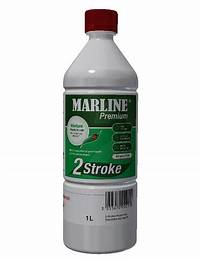 A high-quality, ethanol-free biodegradable alkylate fuel with a shelf life of up to five years without deterioration. It’s suitable for various two-stroke engines and helps in reducing engine deposits and wear.
A high-quality, ethanol-free biodegradable alkylate fuel with a shelf life of up to five years without deterioration. It’s suitable for various two-stroke engines and helps in reducing engine deposits and wear.
VP Small Engine Fuel
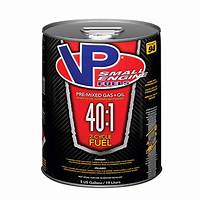 Engineered from higher-grade base stocks, this ethanol-free fuel provides superior performance and protection for two-cycle engines. It’s designed to improve engine life and reliability.
Engineered from higher-grade base stocks, this ethanol-free fuel provides superior performance and protection for two-cycle engines. It’s designed to improve engine life and reliability.
Additionally, some premium petrol options, such as Esso’s Synergy Supreme+ Unleaded 97, are ethanol-free in certain regions of the UK (excluding Devon, Cornwall, Teesside, and Scotland). However, these fuels are not pre-mixed with two-stroke oil, so you’ll need to mix them yourself before use.
When selecting a fuel, consider factors such as availability in your area, the specific requirements of your equipment, and whether you prefer a pre-mixed solution or are comfortable mixing fuel and oil yourself. Using ethanol-free fuel can enhance the performance and longevity of your two-stroke engines, especially after periods of storage.
Important Considerations:
Ethanol-free fuels are not commonly found at standard petrol stations and often need to be purchased from specialist suppliers. Some ethanol-free fuels, especially those designed for specific applications like aviation or motorsport, may not be legal or suitable for use in regular road vehicles. Always ensure that the fuel you choose is appropriate for your specific engine and complies with local regulations.
Ethanol-free fuels generally have better storage properties, making them ideal for equipment or vehicles that are not used frequently.
Given the limited availability of ethanol-free fuels in the UK, it’s advisable to consult with local suppliers or specialists to determine the best option for your specific needs.
Conclusion
-
- The TS410 and TS420 offer superior reliability compared to the TS400, especially in demanding conditions and over long-term use.
- Using ethanol-free fuel significantly improves starting performance after prolonged storage and protects the internal components, making it a worthwhile choice for maintaining any disc cutter.
How To Start a TS400
With the disc cutter on the floor follow these instructions.
Press the decompression valve button. (On top and RHS of the cylinder) This needs to be pressed each time a fresh attempt is made to start the engine
Throttle in to click, leave it.
Choke on the top all the way to the back position ‘2’
On left hand side of machine choke full on (vertical)
Pull till it starts once (might be 10 times) you are pumping fuel
On left hand side of machine, choke half on (45-degree angle)
Pull to start
When started, On side choke off (horizontal)
Rev to warm up.
Off push lever on top to position ‘0’ Kills motor




